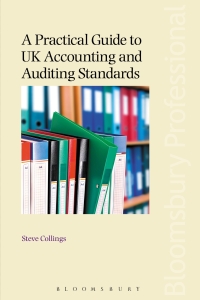



\begin{tabular}{|l|r|} \hline Discount Rate & 4.5% \\ \hline Growth/Inflation Rate & 2% \\ \hline First Cash Flow & 10000 \\ \hline \end{tabular} Sum of PV (Cash Flow) Macaulay Duration = Duration of Liabilities Use the following information for Questions 5 - 10. You should complete these questions using the provided Excel file (PS7_Excel). You are a portfolio manager who runs separate accounts for your clients. A new, 70-year-old client comes to your office in January 2022 to discuss setting up his portfolio for retirement. He tells you the following information: - His life expectancy is 18 years. - During that time, he would like to be able to consume an annuity in which the first payment is made in exactly 1 year, the first payment equals 100K, and the annuity grows at 2% per year to keep up with a normal inflation rate. - You assume that his life expectancy is known with certainty so the discount rate associated with his income annuity should be 4.5%. - The client will leave any leftover money to his children; however, his main concern is that he does not run out of money so his portfolio's expected return should be equal than or greater to 4.5%. - This client has adequate capital to invest; his current account balance equals the present value of the annuity he would like to consume. You observe the following 5 assets in the market: i. iShares TIPS Bond ETF (Ticker: TIP); Duration =4.81 years ii. iShares Core U.S. Aggregate Bond ETF (Ticker: AGG); Duration =6.44 years iii. iShares 20+ Year Treasury Bond ETF (Ticker: TLT); Duration =18.17 years iv. Vanguard Short-Term Corporate Bond ETF (Ticker: VCSH); Duration =2.77 years v. Vanguard Intermediate-Term Corporate Bond ETF (Ticker: VCIT) =6.36 years 5. What is the Macaulay Duration of this individual's desired consumption (e.g., the 18-year growing annuity)? Use the provided duration table in the Excel spreadsheet. Round your answer to three decimal places. 6. Assume that expected returns on each of these assets are equal to their average monthly returns (annualized) from 2017 through 2021. Under this assumption, what is the expected return on the iShares TIPS Bond ETF (Ticker: TIP)? Express your answer as a percentage rounded to three decimal places. 7. Suppose that you invest 20% of your client's money into each asset. What will be the duration of the client's portfolio? Round your answer to three decimal places. 8. Compare your answers in Questions 5 and 7. If you invest the client's money using this equal-weighted approach, the duration of the client's assets (e.g., his bond portfolio) will be the duration of his liabilities (e.g., the annuity) and he will be exposed to a. Less than; market price risk b. Less than; reinvestment risk c. Greater than; market price risk d. Greater than; reinvestment risk e. Not enough information to determine 9. You want to optimize the client's portfolio such that you hedge all interest rate risk (e.g., the duration of his assets matches that of his liabilities). The client gives you the following constraints for this optimization, along with the duration matching: a. His expected return must be greater than or equal to 4.5% (e.g., the discount rate of his liabilities) b. He is most concerned about risk, so he asks you to minimize portfolio volatility c. No asset can have more than 40% of the client's money d. No asset can be short sold (e.g., no weight can be less than 0) Under this scenario, what is the weight that should be invested in the iShares TIPS Bond ETF (Ticker: TIP)? Express your answer as a percentage rounded to three decimal places. 10. Your initial meeting with the client took place in January 2022. During 2022, the Federal Reserve raised interest rates by 1.5%. Ignoring the effect of convexity for now, what is the expected loss in portfolio value that the client has experienced? Hint: Use the following two formulas: a. Modified Duration =(1+r)MacaulayDuration b. %PVFull( no convexity) = AnnualModDuration Yield What is the approximate portfolio loss your client has experienced in 2022 given a 1.5% increase in annual yields? Express your answer as a percentage rounded to three decimal places










